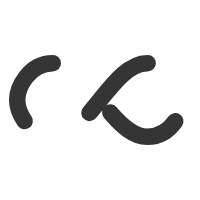Navigating Health Insurance Options: Tips for Choosing the Right Plan
Navigating the world of health insurance can be daunting. Whether you’re looking for your first plan or thinking about switching, understanding the options available and how they match your health needs is crucial. This comprehensive guide will help you make informed decisions about your health insurance, ensuring that you choose a plan that offers the best coverage for you and your family at an affordable cost. From explaining different types of health insurance plans, such as HMOs, PPOs, and high-deductible plans, to breaking down the complex terms of coverage options, network considerations, and cost-sharing arrangements, this article aims to demystify the process and empower you with the knowledge you need.
Understanding Different Types of Health Insurance Plans
Health insurance plans come in various forms, each with its benefits and drawbacks. Here’s an overview of the most common types:
Health Maintenance Organizations (HMOs)
HMO plans typically have lower premiums and out-of-pocket costs but require you to choose healthcare providers within their network. You’ll need a referral from your primary care physician (PCP) to see a specialist, which can limit flexibility but help in managing overall medical costs.
Preferred Provider Organizations (PPOs)
PPOs offer more flexibility in selecting a healthcare provider and don’t usually require a referral to see specialists. While PPOs have higher premiums than HMOs, they provide better coverage for services inside and outside the network.
High-Deductible Health Plans (HDHPs) with Health Savings Accounts (HSAs)
HDHPs typically feature lower monthly premiums and higher deductibles. These plans are often paired with Health Savings Accounts (HSAs), allowing you to save money tax-free to pay for qualified medical expenses. This setup can particularly benefit younger individuals or those in good health who don’t anticipate significant medical expenses.
Exclusive Provider Organizations (EPOs) and Point of Service (POS) Plans
EPOs and POS plans blend elements of HMOs and PPOs. Like HMOs, EPOs require you to use network providers, but no referrals are necessary. POS plans allow more flexibility and cover services outside the network if referred by a PCP, combining aspects of both HMO and PPO features.
Key Factors to Consider When Choosing a Plan
Coverage Options
Understanding what each plan covers is paramount. Evaluate the specifics of what treatments and services are covered, including preventive care, prescriptions, maternity care, mental health services, and treatments for chronic conditions. Check the plan’s formulary for medications to ensure your prescriptions are covered.
Network Considerations
The size of the insurance plan’s network can significantly affect your choices. A larger network provides more options for doctors and specialists, which is essential if you require specific care. Verify if your current doctors are included in the plan’s network, as this could impact your continuity of care.
Cost-sharing Arrangements
The right balance between premiums, deductibles, copayments, coinsurance, and out-of-pocket maximums can affect your financial planning:
- Premiums: These are your monthly health insurance costs. Higher premiums usually mean lower out-of-pocket costs when you need care.
- Deductibles: These are the amounts you pay before your insurance starts to pay its share. Consider how much you can afford to pay in a worst-case scenario.
- Copayments and Coinsurance: These are your shares of the costs for specific services after you’ve paid your deductible.
- Out-of-pocket maximum: This is the most you will have to spend in a year on covered services under your plan.
Additional Benefits and Features
Some plans offer extra benefits like telemedicine, 24/7 nurse lines, or wellness programs. These features can provide added convenience and value, making a particular plan more appealing based on your lifestyle and health needs.
Making an Informed Decision
Compare Plans
Use the information you’ve gathered about different plans to compare them. Look at not only the cost but also the coverage and benefits. Tools like online cost calculators, available through many healthcare websites, can help you estimate the yearly costs of different health plans based on your health status and expected usage.
Review Plan Ratings
Many health insurance platforms provide ratings for plans based on quality of care and customer satisfaction. These ratings can help you understand the experiences of other consumers with the health plan.
Consult Experts
If you find it challenging to decide, consulting with a licensed health insurance agent or a financial advisor who understands health policies can provide guidance tailored to your specific circumstances.
Conclusion
Choosing the right health insurance plan is a critical decision that impacts your physical and financial well-being. By understanding the different types of plans available, what they cover, and how they charge for services, you can make a more informed choice that fits your needs and budget. Remember, the cheapest plan isn’t always the best—consider all factors, including coverage, network, and out-of-pocket costs, to ensure you and your family are well-protected. Empower yourself with knowledge, and confidently take control of your health care planning.






